Small-leaved ficus: description, planting and care
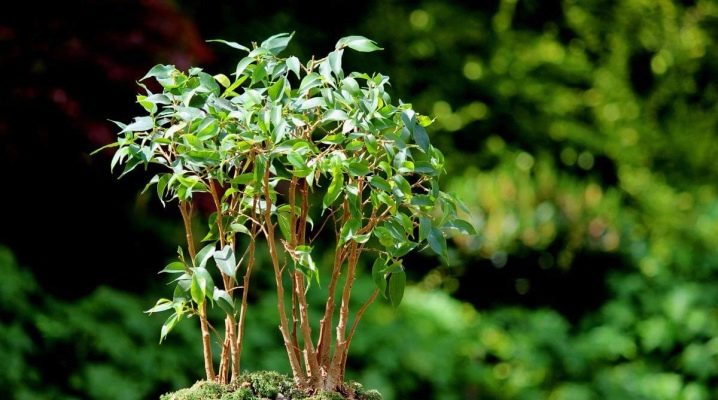
Ficuses can often be found in apartments, offices, shops. This plant is unpretentious in care, in addition, it always pleases the eye with its glossy leaves of saturated color. Small-leaved ficus has become widespread, whose crown, with proper care, is capable of taking both classical and unusual forms.

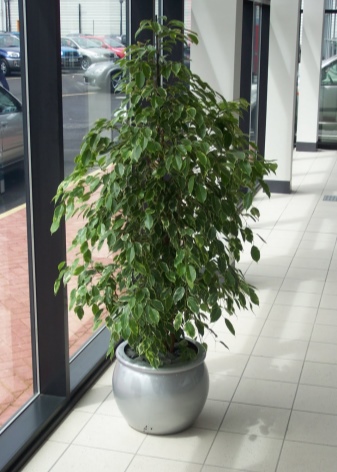
Description
The name "ficus" is translated from Latin as "fig tree". One of the most common types of ficus is small-leaved or Benjamin's ficus... It is popular among gardeners due to its relative ease of care and beautiful appearance: a plant with a properly formed lush crown will delight the owner of green foliage all year round.
A miniature tree with small leaves will complement the interior of both a small apartment and a spacious office. The Chinese believe that the plant brings well-being to the home, and they greatly respect it.
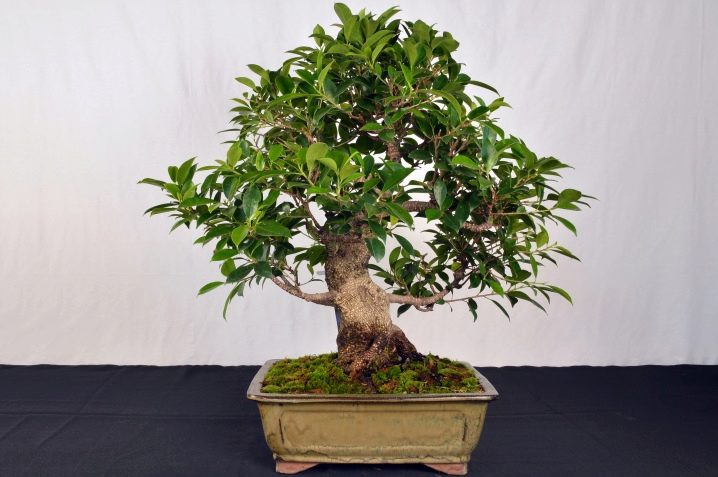
Ficus flowers often have light shades. At home: in Australia, the Philippines and South Asia, the plant pleases passers-by with flowers out of seasons for almost the whole year. But at home, ficuses bloom much less often and only with scrupulous care. However, this does not negate the fact that Benjamin's ficus is picturesque without flowers. Besides its red or orange berries are deceiving - the fruit should not be eaten.


Small-leaved ficus has many varieties, for example: "Daniel", "Monique", "Nicole", "Safari", "Baroque". They differ in color and shape of the leaves, the thickness of the branches, and the shape of the crown.
Ficus milky juice is a fairly strong allergen. That is why the plant should not grow in the house of allergy sufferers.
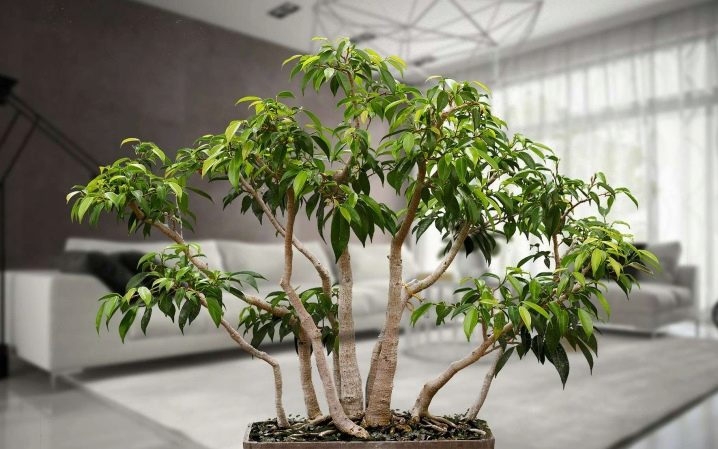
How to care?
Caring for small-leaved ficus at home means creating an atmosphere as close as possible to its native environment. With proper care, the plant will reach one and a half to two meters in height and will have bright and dense glossy leaves.
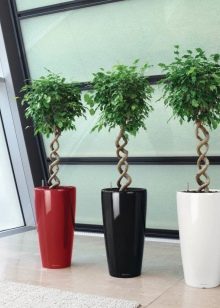
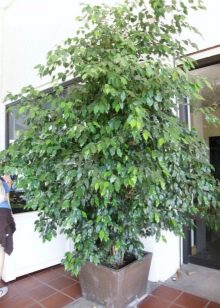

Lighting
Ficus is native to the subtropics, so it requires good lighting without the scorching sun. The ideal lighting option is diffused. It is advisable to put the tree in the southern or eastern side of the room. In a particularly bright sun, it is better to shade the flower so that the small leaves do not dry out. In winter, it is better to put the plant under special phytolamps, since the daylight hours become much shorter.
With a lack of sun, the leaves will become faded.
However, you should not often rearrange the ficus in search of a sunny place - you risk losing its gorgeous crown.
Do not be alarmed when the ficus still sheds some of the leaves in the fall - this is a natural process.
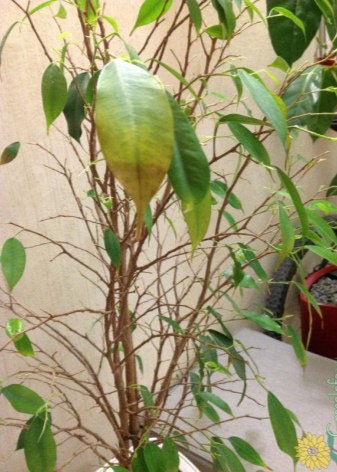
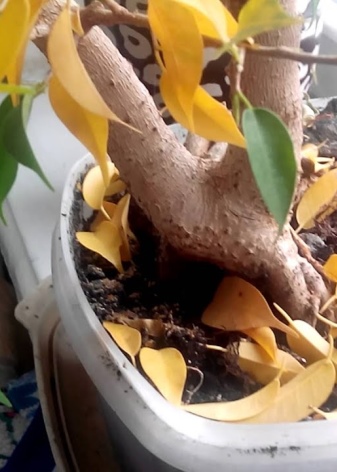
If the ficus is not in a sunny place, place a mirror in front of it that reflects sunlight. So the tree will receive the necessary lighting and will not get burned from direct rays.
Unroll the pot from time to time so that the crown does not tilt towards the lighted side.
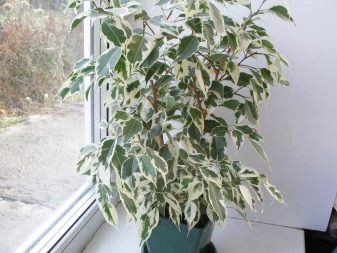
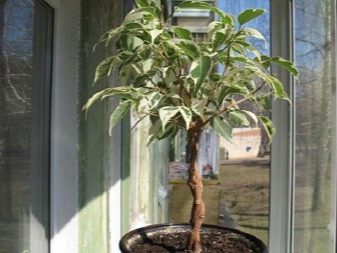
Watering
Small-leaved ficus is recommended to be watered with filtered warm water no more than 1-2 times a week. Make sure the soil is completely dry before watering the plant. To make the soil dry faster, you can periodically loosen it with a spatula or fingers.... For better drainage at the bottom, it is imperative to lay a layer of small pebbles. Make sure that no water accumulates in the pan.
Do not forget to spray small leaves of ficus twice a day.Some growers advise to sometimes wash the crown of the tree under a warm shower. If this is not possible, try to regularly wipe the leaves of the tree from accumulated dust with a damp cloth... Of course, the plant will not die without this, but its crown will become more luxuriant and healthier.
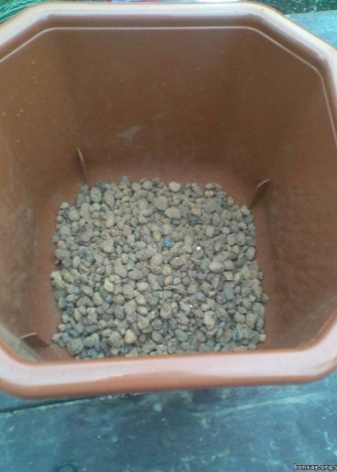
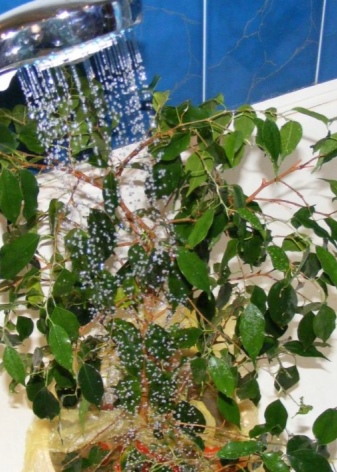
Be guided by the following principle: less temperature - less watering. At temperatures less than 10 degrees, watering is generally worth postponing for a while. If you flood a plant, its root system will rot.
Temperature
Ideal temperature for a plant in summer it ranges from 19 to 23 ° C, in winter - between 17 and 20 ° C, but not below 15 ° C... Ficus will not survive at temperatures below 10 ° C. Particular attention in the cold period should be paid to the roots of the tree. They can be wrapped with air bubble wrap and raised to an elevation if it is blowing in the room. Drafts are best avoided at any temperature. This will keep the tree alive for a short time if the temperature is too low.
Remember that ficus cannot be placed near batteries and heaters, they dry the air. Ventilate the area regularly to prevent the growth and spread of fungus on the plant. A signal indicating a fungal infection is a gray tint of foliage.
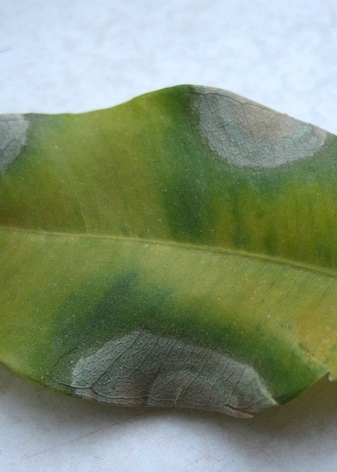
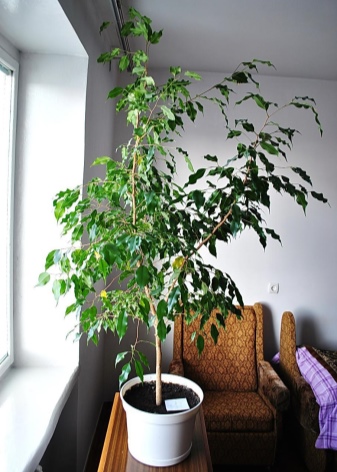
Fertilizer
For Benjamin's ficus, universal feeding of decorative deciduous plants is perfect. However, they should be diluted at a slightly lower concentration than the manufacturers claim. Also, flower shops sell special fertilizers for ficuses, which must be used according to the instructions. The key component when feeding ficus is nitrogen, thanks to which the crown of the tree will grow faster. Therefore, nitrogen is especially necessary during the growth of young ficus.
Ficus requires fertilization from spring to autumn; in winter, feeding is stopped. The average frequency of feeding during the warm period is once a month. Lack of nutrients leads to gradual loss of foliage.
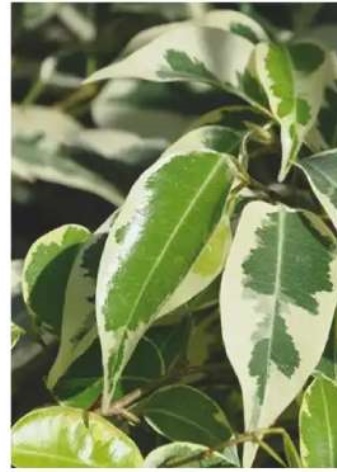
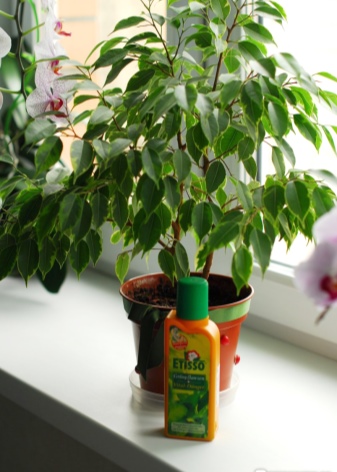
Pruning
Ficus must be pruned every year. So its crown will have a neat designed appearance, it will not overgrow. Small-leaved ficus responds well to pruning. With its help, a lot of side shoots will appear.
Pruning small-leaved ficus does not require special skills: it is necessary to remove the top of the plant along with possible buds. If you don't want the branches to become infected, treat them with charcoal. While the plant is very small, limit yourself to pinching, that is, carefully remove the main growth points that violate the compactness of the crown.
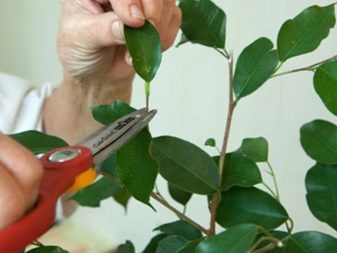
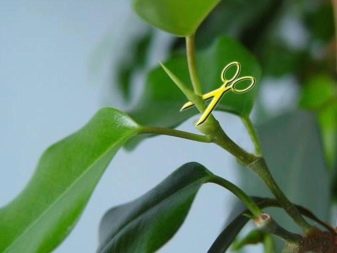
It is noteworthy that the trunks of several ficuses planted side by side can intertwine, grow together and form interesting curled compositions. If you want to create such a living structure, do not forget to cut the bark in time at the point of contact between the trunks of young plants.
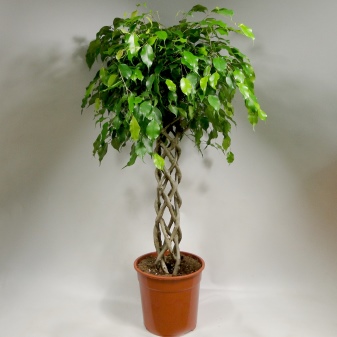
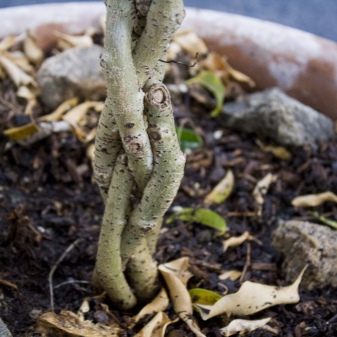
How to propagate?
The period of active growth of foliage and root system of small-leaved ficus occurs in late spring - early summer. Take this time for the plant to propagate.
Let's consider several of its main methods: using cuttings, seeds, layering.
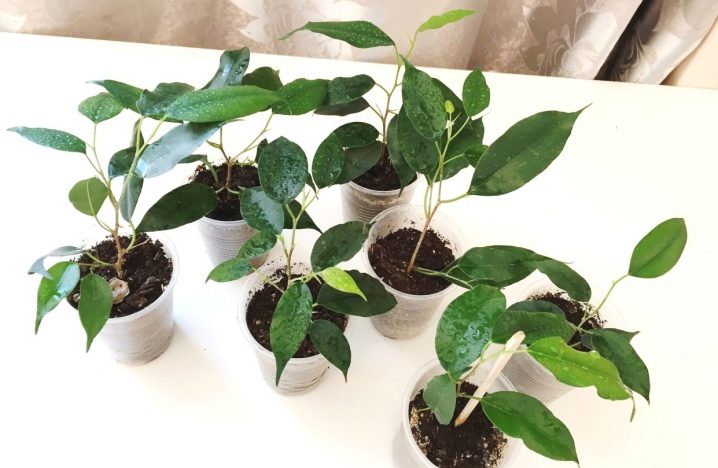
By cuttings
Cutting is the most common breeding option. It is enough to cut off several upper stems with one or several leaves from an adult tree with a sharp knife, rinse off the milky juice and place in a vessel with water. The cuttings should be in a sunny location. The water needs to be changed frequently.
Please note that the cutting must be mature. The green stem will keep roots out and will quickly rot in the water. As soon as the roots grow on the handle, you can begin to shrink them.
In order for the stalk to take root faster, create greenhouse conditions for it, that is, cover with a glass jar. The temperature required for keeping cuttings should not fall below 20 ° C. The term for root formation is 2-4 weeks.
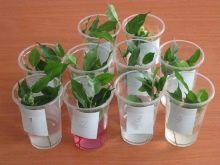
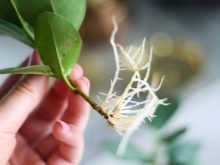

Seeds
This method is especially difficult for home breeding.Before planting small-leaved ficus, thoroughly treat the seeds with a growth stimulant and substances against fungal diseases, and then sow them in a moist substrate. The container of seeds must be wrapped in foil and placed in a greenhouse.
The temperature at which the seeds will sprout should be between 25-30 ° C.
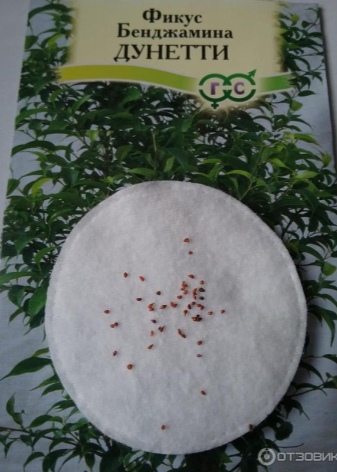
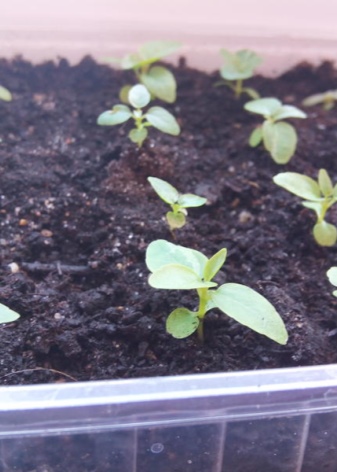
Air layering
This method is suitable for you if the ficus gives a small amount of young growth, but has many lignified stems. It is necessary to make a ring-shaped cut of the bark (along the entire circumference) on the selected branch, without affecting the wood. Treat the exposed area with a growth stimulant and wrap with sphagnum (natural peat material). Secure the resulting structure with foil and tape for strength.
As soon as you see the roots under the film, uncork them and cut off the seedling with a sharp knife. The shrinkage of the seedling is the same as when grafting.
From a large number of aerial roots, when shrinking, bonsai can be obtained.
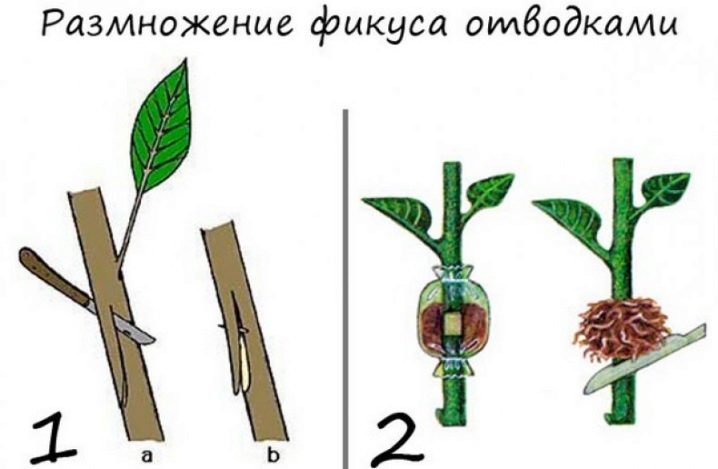
Pest control
Among the ways to eliminate the most common pests, threatening small-leaved ficus, the following options can be noted:
- if a scabbard has adhered to the plant, collect it with gloved hands, disinfect the plant with an insecticide;
- from mild aphids on yellowed leaves, a soap solution will help;
- if a mealybug is wound up on the ficus, rinse it well in the shower, then treat it with an insecticide;
- nematode or root growths are also removed with insecticides;
- spider mites should be destroyed with strong chemicals.
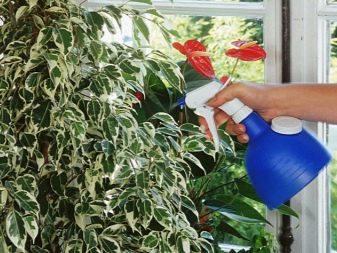
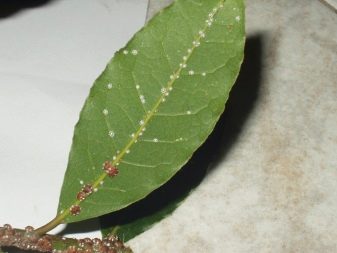
With proper care, small-leaved ficus can live at home for up to 15 years. The symbol of Bangkok will delight you with a beautiful spreading crown for many years. Also, ficus will serve as a good gift for a florist - in the east, such a gift is considered a wish for many years of life and prosperity.
For information on how to transplant small-leaved ficus, see the next video.































Thanks! A very interesting and useful article for me.
For me it was very informative and interesting information about ficus.
The comment was sent successfully.